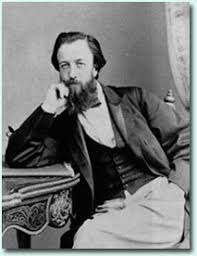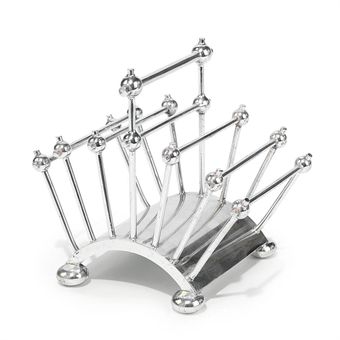Bankruptcy appears to seal Toronto auction house's fate
Tuesday, October 27, 2009
0 Comments
By Stephen P. Sweeting, ASA, MRICS
Although it might be a little early to administer last rites, the October 26 bankruptcy of Ritchies Auctioneers in Toronto appears to be the end of the 42 year old firm. I’m not going to go into the contentious reasons behind the insolvency; readers can check the following link in The Globe and Mail for a blow-by-blow account of the firm’s disastrous last few months: Auction house Ritchies forced into bankruptcy. Some of you may recall that I touched on Ritchies’ failure in an August 2009 post exploring how structural changes in the business landscape might affect local fine art and antiques markets. (See: Think Global and Think Local) Ritchies' business troubles first manifested themselves to the wider public when Sotheby’s Canada ended a multi-year auction services agreement with the firm due to the non-payment of consignors.
Ritchies was a quirky regional firm that tended to cater to the lower and mid-level art and antiques market in the Greater Toronto area. But every now and then the small firm scored some real successes that pushed them onto the national and even the international stage. The sale of a remarkable Francois Boucher pastel drawing for a record-breaking half a million dollars was one such foray onto the international stage. And their most recent association with Sotheby’s catapulted the firm into Canada’s top-tier fine art auction market. It was in the Ritchies salesroom that Sotheby’s sold Paul Kane’s Scene In The Northwest- Portrait for CAD $5.1 million including buyer’s premium in 2002. This record price for a Canadian painting sold at auction still stands today.
The failure of a regional auction house is not particularly newsworthy in the grander scheme of the international fine art and antiques marketplace. As most of us know, smaller auction houses both come and go. But as a former cataloger at D. & J. Ritchie Fine Art Auctioneers & Appraisers – the original incarnation of the firm before it was bought by the current owner – I have to admit a little sadness over the troubles and the insolvency. I cut my teeth in the appraisal of personal property at Ritchies and would be remiss in not marking the firm’s passing in this forum.
Although it might be a little early to administer last rites, the October 26 bankruptcy of Ritchies Auctioneers in Toronto appears to be the end of the 42 year old firm. I’m not going to go into the contentious reasons behind the insolvency; readers can check the following link in The Globe and Mail for a blow-by-blow account of the firm’s disastrous last few months: Auction house Ritchies forced into bankruptcy. Some of you may recall that I touched on Ritchies’ failure in an August 2009 post exploring how structural changes in the business landscape might affect local fine art and antiques markets. (See: Think Global and Think Local) Ritchies' business troubles first manifested themselves to the wider public when Sotheby’s Canada ended a multi-year auction services agreement with the firm due to the non-payment of consignors.
Ritchies was a quirky regional firm that tended to cater to the lower and mid-level art and antiques market in the Greater Toronto area. But every now and then the small firm scored some real successes that pushed them onto the national and even the international stage. The sale of a remarkable Francois Boucher pastel drawing for a record-breaking half a million dollars was one such foray onto the international stage. And their most recent association with Sotheby’s catapulted the firm into Canada’s top-tier fine art auction market. It was in the Ritchies salesroom that Sotheby’s sold Paul Kane’s Scene In The Northwest- Portrait for CAD $5.1 million including buyer’s premium in 2002. This record price for a Canadian painting sold at auction still stands today.
The failure of a regional auction house is not particularly newsworthy in the grander scheme of the international fine art and antiques marketplace. As most of us know, smaller auction houses both come and go. But as a former cataloger at D. & J. Ritchie Fine Art Auctioneers & Appraisers – the original incarnation of the firm before it was bought by the current owner – I have to admit a little sadness over the troubles and the insolvency. I cut my teeth in the appraisal of personal property at Ritchies and would be remiss in not marking the firm’s passing in this forum.
|













